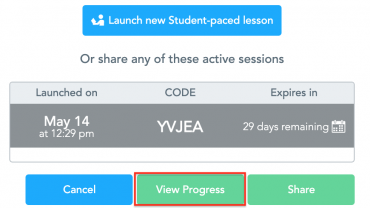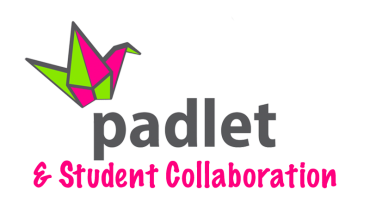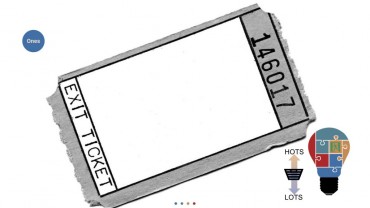
Teacher View in Nearpod Student-Paced Mode
Nearpod has added a Teacher View for Student-Paced lessons. This will give teachers real-time insights into students’ progress in the Student-Paced lessons. Now you can: 👀 easily monitor student progress the same way you do during a live lesson. ✅ quickly determine which students have joined the student-paced lesson. 📋 moderate Collaborate! Boards immediately when
- Published in Learning Technology Tools, Nearpod, Teaching with Technology

PLAs #6 – Brainstorm
Doing a brainstorm should be familiar territory for many faculty. This is a jack-of-all-trades tool that can be used at any time, and is scalable for any length of time, from a single activity, to a way to assess a longer term project. Brainstorming is the emptying of the mind of all ideas around a
- Published in Instruction, PLAs

Get Students Collaborating with Padlet
Padlet has been around for quite a while and though many teachers have been using it for years, many others are just hearing about it as we’ve entered a new era of online learning. Regardless of whether you have used Padlet before or not, or whether you’ve only used it from a student perspective, this great
- Published in Teaching with Technology

PLAs #7 – Exit Ticket
As in PLA #8 – One Word, The Exit Ticket is an activity you do at the end of an activity, lesson, unit, project, presentation, midterm, or course. It’s a way to get students to critically reflect in some way that you decide, but it also pushes every individual to give you a response. Unlike
- Published in Instruction, PLAs

PLAs #8 – One Word
One Word is a very simple exit activity. It’s designed to give your learners just a little extra time to process the lesson of the day. It’s also scalable, as it can be used to process a single activity, or a summary after presentations, or a quick reflective nod to a group project. It requires
- Published in Instruction, PLAs
Changing learners’ beliefs about learning
Pay more attention to learners’ motivations for studying Study patterns and experience of learning are highly affected and influenced by the very different learning environment of students. Beaty, Gibbs, Morgan (1997) argue the different learning orientations and their effect on students’ success and motivation. Orientation “assumes that students have an active relationship with their studying”,
- Published in Instruction
Subscribe to our Newsletter
Recent Posts
Teaching infographics #2 – VOCAL: Traits of a Successful Online Teacher
This graphic is a quick guide for some common s...10 routines for teaching online – #4 Talk types
The idea of ‘talk types’ is loosely...
Differentiating Instruction in Your LMS
Anyone who has been in the world of education f...
Authors
- Andy Steele (9)
- Azim Ahmed (12)
- Christine Lampe (3)
- Gemma Escott (1)
- Larry Davies (25)
- Mahinour Ezzat (1)
- Raghad Nihlawi (16)
- Samantha McDonald Amara (16)
- Sarah Whittaker (55)
- Silishi Noushad (1)
Categories
- Adult Learning
- Assessment
- Blackboard
- Blackboard
- BookWidgets
- Collaborate Ultra
- Ed Tech
- Grade Center
- ILC
- Infographics
- Instruction
- Learning Technology Tools
- Microsoft
- Mobile OS
- Mobile Technology
- Nearpod
- News & Events
- PLAs
- Professional Development
- Routines
- Teaching with Technology
- Uncategorized
- Webinars
Tag Cloud
Archives
- February 2021
- November 2020
- October 2020
- September 2020
- August 2020
- July 2020
- June 2020
- May 2020
- April 2020
- March 2020
- February 2020
- January 2020
- December 2019
- November 2019
- October 2019
- September 2019
- August 2019
- June 2019
- May 2019
- April 2019
- March 2019
- February 2019
- March 2016
- January 2016
- November 2015
- October 2015
- June 2015
- May 2015
- March 2015
- February 2015
- January 2015
- November 2014
- October 2014
- September 2014
- August 2014
- June 2014
- May 2014
- April 2014
- March 2014
- February 2014
- January 2014
- September 2013
- January 2013
- December 2012
- November 2012
- October 2012
- July 2012
- April 2012
- March 2012
